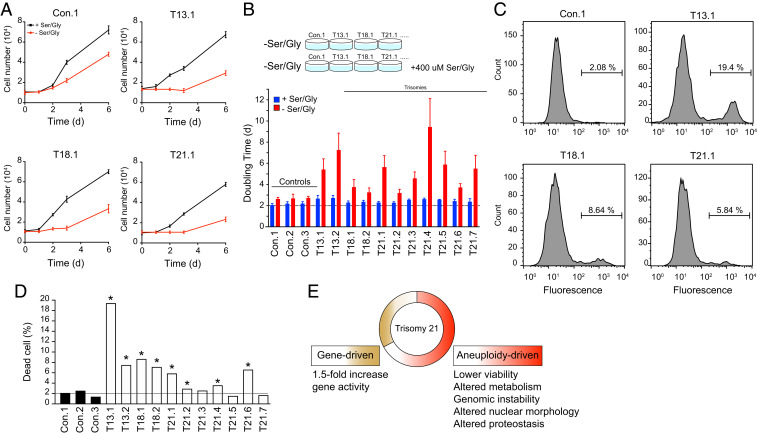Fig. 7.
Trisomic primary fibroblasts rely on serine-driven lipid biosynthesis and show lower viability compared to euploid controls. (A) The proliferation of control fibroblasts and trisomic fibroblasts with or without serine and glycine. The glycine was depleted because it can be used to generate serine by the SHMT1/2 enzymes. The growth curves of four representative cell lines are shown. (B) Doubling times of primary fibroblasts were calculated in medium with (blue bars) or without serine (red bars). A schematic of the experimental procedure is show above. The error bars represent SD, n = 3. (C, D) The viability assay shows that there is an increase in cell death in the trisomic fibroblasts. Fluouresence-activated cell sorting is shown for four representative measurements, n = 5,000 cells (see SI Appendix, Fig. S7 for assay schematic and control experiment). In D, *P < 0.05 between trisome and average control, Student’s t test. (E) The consequences of trisomy 21 in human cells are driven by gene- and aneuploidy-driven phenotypes.

